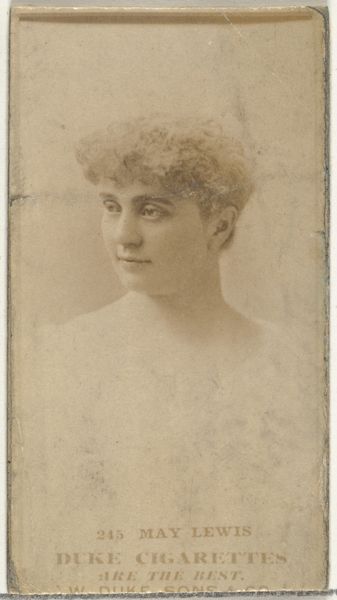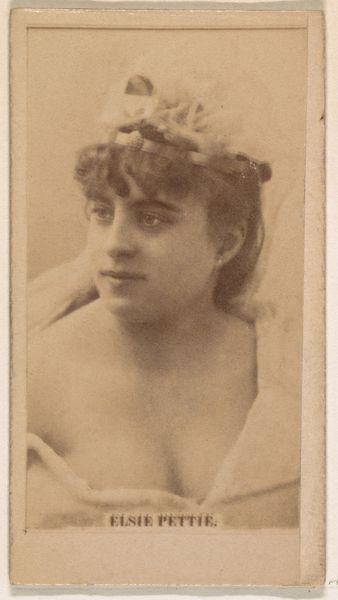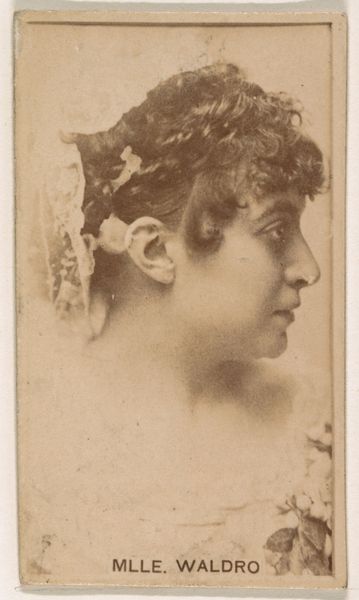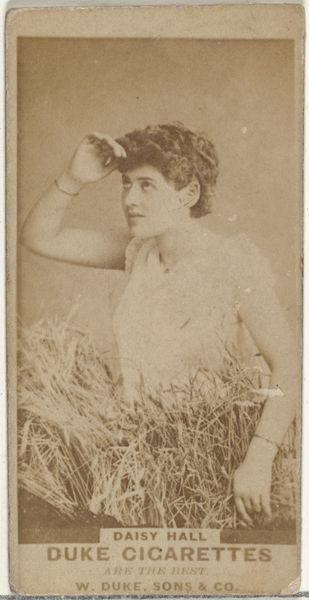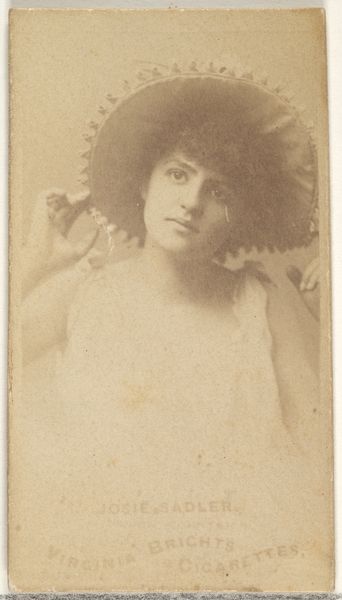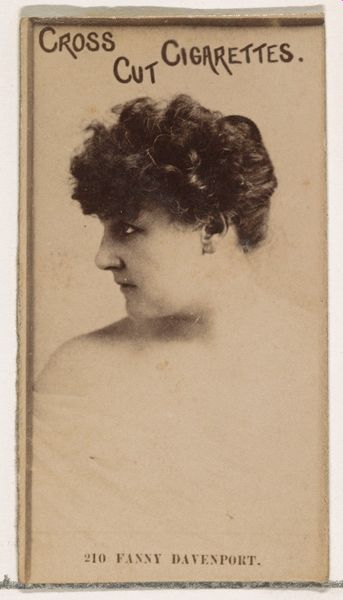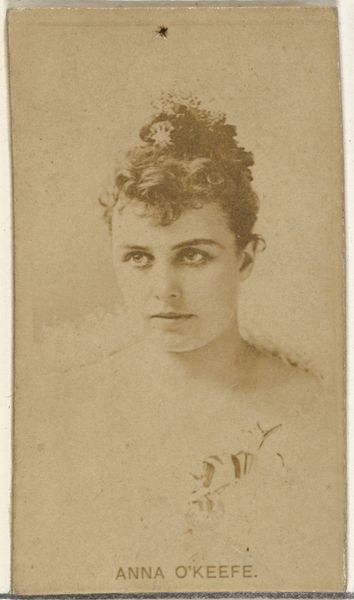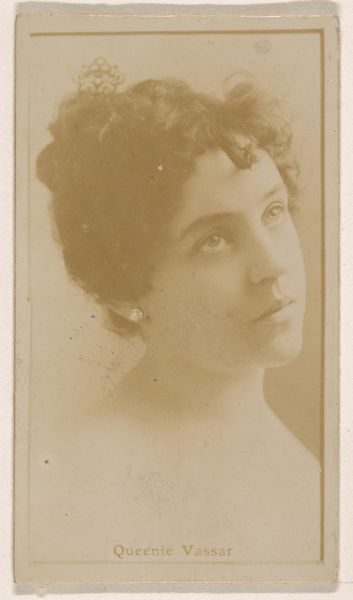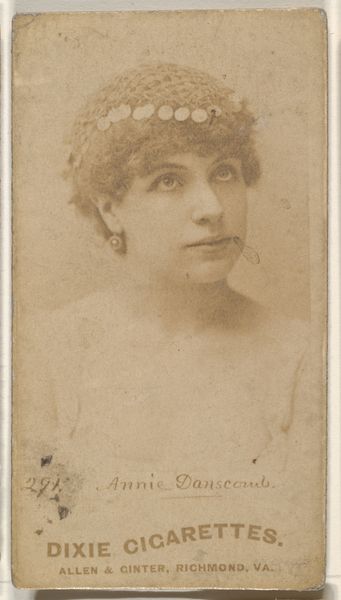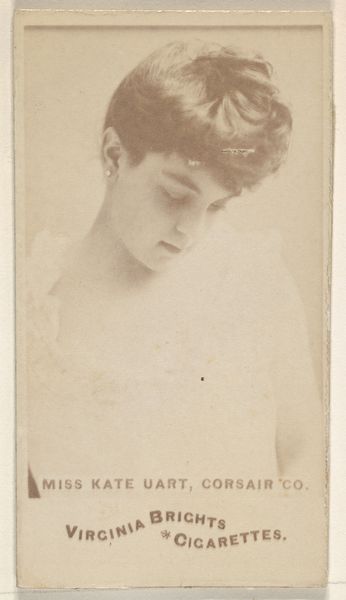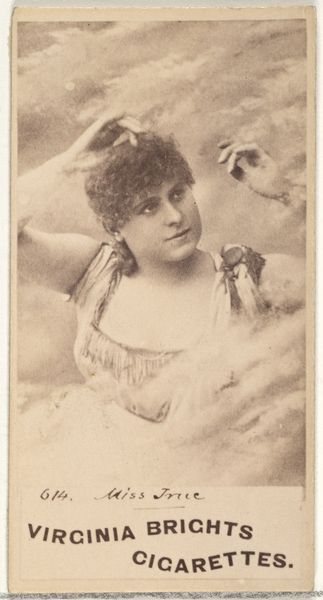
M. Ollinier, from the Actresses series (N245) issued by Kinney Brothers to promote Sweet Caporal Cigarettes 1890
0:00
0:00
print, photography
#
portrait
#
pictorialism
# print
#
photography
Dimensions: Sheet: 2 1/2 × 1 7/16 in. (6.4 × 3.7 cm)
Copyright: Public Domain
Editor: Here we have a photograph from 1890 titled "M. Ollinier, from the Actresses series (N245)" by the Kinney Brothers, promoting Sweet Caporal Cigarettes. It's a small, sepia-toned portrait and looks like it might have been part of a larger collection. What catches your eye about this particular image? Curator: What strikes me is not so much the subject, M. Ollinier, but rather the context of its production. We see this photograph, part of a mass-produced set to be included with Sweet Caporal Cigarettes. That transforms it. Suddenly it’s not just a portrait, but part of a vast network of tobacco production, photographic printing, and the circulation of images tied to celebrity culture. Think about the labor involved, from cultivating the tobacco to the chemical processes involved in developing this print. Editor: So you're less interested in her as an individual and more as a cog in a much larger industrial machine? Curator: Precisely. How does this image function within a consumer culture? Its original function wasn’t aesthetic appreciation. Instead it’s this piece of marketing material meant to encourage the purchasing and consumption of cigarettes. And the distribution method challenges typical boundaries – photography wasn't yet considered high art, and it finds itself disseminated through a very commonplace item. This tiny print also acts as material evidence of labor practices, advertising strategies, and the societal pressures and norms that led to the immense popularity of such products. What labor underpinned the creation and distribution of the very paper this was printed on? Editor: I never really thought of art in terms of commodity, just aesthetics. Curator: Think of art as *always* entangled with material culture and economy, even when we try to isolate it. Even within the frame of art history. By thinking of materials and industry in every object we can build better contextual understanding. Editor: This has really changed my view of it, seeing it as part of the industrial revolution. It seems so different than its artistic value alone. Curator: Exactly, thinking about production and material value unlocks the meaning we extract from art, more than aesthetics ever can.
Comments
No comments
Be the first to comment and join the conversation on the ultimate creative platform.
